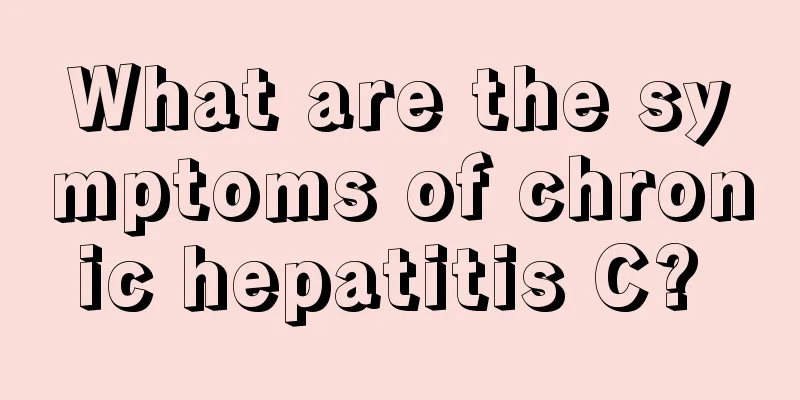Things to note about diet after appendicitis gas discharge

|
After suffering from appendicitis, many people need surgical treatment. Although appendicitis surgery is now considered a minor operation, patients still need to pay attention to many things after the operation, especially in terms of diet. After appendectomy surgery, the patient cannot eat anything or drink water before passing gas. He can only eat after passing gas. Note 1 After surgery for acute appendicitis, you cannot eat anything, including water, before ventilation. Note 2 After surgery for acute appendicitis, you can drink some warm water after ventilation, and then you can eat radish soup. It is a good time to eat radish soup, which is also called ventilation soup. Eating it is beneficial to intestinal peristalsis, allowing the patient to defecate earlier and restore gastrointestinal function earlier. (Generally ventilation will be done the next day after the operation, but it also depends on individual physical condition). Note three After surgery for acute appendicitis, you can eat some porridge or soup on the second day after ventilation, but be careful not to eat greasy food. Note 4 After surgery for acute appendicitis, you can slowly increase your food intake after three or four days of ventilation, and start eating some fruits, such as bananas or apples. Other fruits should not be eaten for the time being. Note five Vegetables that can be eaten within 10 days after acute appendicitis surgery include winter melon, radish, cauliflower, etc. After the operation, you can stew some black fish soup for the patient to drink, which is conducive to the healing of the wound. Do not add ginger to soup after surgery for acute appendicitis. You can eat bananas and apples as fruits. Note 6 After appendicitis surgery, you should mainly eat light and easily digestible foods, such as millet porridge, rice porridge, steamed buns, milk, vegetable soup and other easily digestible foods. Note seven The diet should be kept light and eat more fiber-rich foods. Foods containing crude fiber can enhance gastrointestinal activity and keep bowel movements smooth. Therefore, a certain amount of vegetables should be included in the diet, especially green leafy vegetables. Such as green leafy vegetables, radishes, beans, fruits, whole grains, mushrooms, and fungus. Note 8 Bananas, apples and other easily digestible fruits are edible. They all contain natural antibiotics that can inhibit bacterial reproduction, increase lactobacilli in the large intestine, promote intestinal peristalsis, and help with bowel movements and detoxification. Note nine Eat more foods high in protein, such as chicken and fish. However, it is recommended to drink more soup and eat less meat. Drinking fish soup and chicken soup every day is very beneficial for wound healing. In addition, drinking sea bass soup every day is also good for wound healing, but it is best to remove the skin before eating, the effect will be better. Note 10 Eating more foods containing vitamin C can help promote wound healing. Fruits such as lemons, oranges, tangerines, kiwis, strawberries, etc.; most green leafy vegetables, cabbage, green peppers, etc. are rich in vitamin C. |
<<: How to take care of appendicitis and abdominal bloating
>>: What are some tips for relieving appendicitis pain
Recommend
What are the methods to whiten naturally dark skin
Many people are born with dark skin. This is due ...
What is the reason for stinging pain in the urethra?
I believe many of my friends find it strange to f...
What should be paid attention to in percutaneous interventional treatment of liver cancer? 5 aspects should be strengthened
After percutaneous interventional treatment for l...
What to do if the vitreous body of the eye is cloudy? The treatment method is like this
Vitreous opacities are an eye disease with a rela...
What to do if liver cancer has spread to the late stage? You can use these methods
After liver cancer is detected, many people will ...
What are the specific symptoms of prostate cancer
The clinical manifestations of prostate cancer va...
What are the consequences of not treating brain tumors? What are the causes of brain tumors?
If a person with a brain tumor does not receive t...
What are the symptoms of a blood allergy?
Symptoms of blood allergy are not uncommon and ca...
What are the wonderful uses of rice washing water?
There is a slogan in life that everyone knows and...
What does it feel like to be hypnotized
I believe many of my friends have watched movies ...
The hazards of excessive protein
The nutrients our bodies need every day require p...
What are the early symptoms of ankylosing spondylitis
In order to treat ankylosing spondylitis more qui...
How to wash your face to get rid of pimples
It is very common to have pimples on the face. In...
What are the main early symptoms of lung cancer? Four common symptoms of early lung cancer
Lung cancer is a relatively serious cancer diseas...
Is smoking harmful to the skin?
Nowadays, a healthy lifestyle is advocated, so ma...









